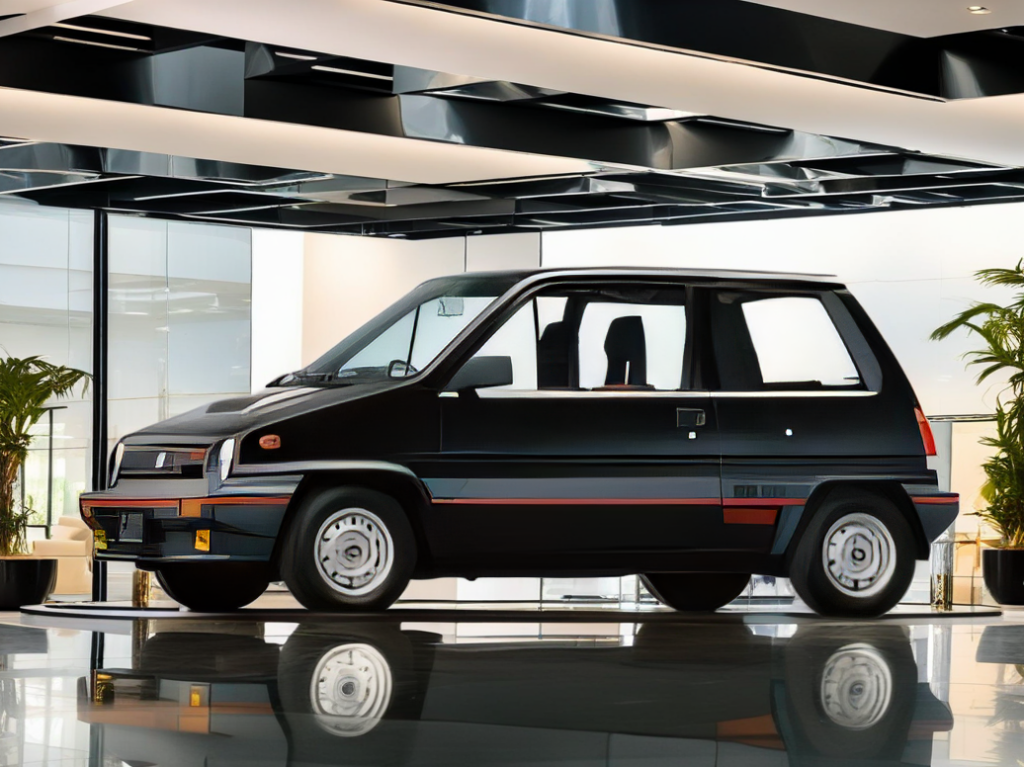The Honda City Turbo: A Compact Marvel of Engineering
January 9, 2025

The automotive landscape has long been defined by a continuous quest for innovation—small, efficient vehicles that do not compromise on performance. One such vehicle that stands out in this realm is the Honda City Turbo. Launched in the early 1980s, this compact sedan has carved its niche in the hearts of car enthusiasts around the globe. In this blog post, we delve into the history, specifications, features, and cultural significance of the Honda City Turbo, covering everything from its inception to its status in the present day.
A Glimpse into History

The Honda City Turbo was introduced in 1981, during a time when the automotive industry was shifting toward smaller, more fuel-efficient vehicles. This was a strategic move by Honda to target urban drivers and young professionals who desired compactness along with style and performance. The City Turbo stands out for being one of the early adopters of turbocharging technology in a consumer compact car—a concept that would later gain substantial traction in the market.
Engine Specifications and Performance
What truly sets the Honda City Turbo apart from its contemporaries is its engineering prowess. Powered by a 1.2-liter turbocharged inline-4 engine, the City Turbo was able to deliver an exhilarating driving experience. The turbocharger allowed the engine to produce 100 horsepower, which was remarkable power for a compact sedan of its time. This engine, combined with a lightweight chassis, provided brisk acceleration and a nimble driving experience that resonated well with enthusiasts.
The City Turbo utilized a 5-speed manual transmission, which added to the overall driving engagement. The performance characteristics of the car earned it a reputation for being not just a commuter vehicle, but a fun-to-drive option in an era when many cars leaned towards blandness.
Design and Features
The exterior design of the Honda City Turbo was forward-thinking and distinctly Japanese. It featured a sharp, angular profile and a unique front end that included a sporty grille and distinctive headlights. The compact dimensions made it ideal for navigating crowded urban environments, while still managing to provide sufficient room for passengers and cargo.
Inside, the Honda City Turbo boasted a driver-focused cockpit. The dashboard was designed with an array of analog gauges that prioritized functionality. The seating was comfortable and supportive, making long drives a breeze, while technology, though primitive by modern standards, included essentials like an AM/FM radio and an optional cassette player.
One of the eye-catching features of the City Turbo was its “City Turbo II” variant, which included an intercooler that enhanced performance further, allowing the engine to achieve even higher efficiency and response. This model also came equipped with unique styling elements such as upgraded wheels and more luxurious interior options.
Cultural Significance and Legacy
The Honda City Turbo has contributed significantly to Honda’s legacy in the automotive world. It encapsulated the brand’s philosophy of “the power of dreams,” demonstrating that small cars could deliver both performance and practicality. Its impact was felt not just in Japan, but also internationally, paving the way for a range of compact vehicles that embraced turbocharging technology.
Car enthusiasts and collectors today have come to see the Honda City Turbo as a classic example of the 1980s compact car movement. Moreover, the car has developed a cult following among aficionados who appreciate its innovative design and engineering. It has also left a significant mark on motorsport, particularly in Japan, where it participated in various events, showcasing that compact cars could indeed perform on track.
Modern Revival and Future Prospects
Fast forward to the present, and the legacy of the Honda City Turbo continues to inspire contemporary automotive design. The Honda City has seen various iterations since the original Turbo, evolving into a sophisticated sedan while retaining much of its core values—efficiency, reliability, and performance.
In recent years, the automotive industry has once again turned its gaze toward turbocharged engines, driven by the need for better fuel efficiency and decreasing emissions. Modern-day models of the Honda City, while no longer using the original Turbo moniker, continue to employ advanced engine technologies that pay homage to the pioneering spirit of the City Turbo.
Conclusion
The Honda City Turbo is more than just a car; it is a testament to Honda’s commitment to innovation and quality in the automotive space. Its combination of turbocharging technology, engaging performance, and compact design set a high bar for future vehicles. As we look toward the future, the lessons learned from the Honda City Turbo will undoubtedly influence how we perceive compact cars, ensuring that they remain an integral part of the automotive narrative.
Whether you are a nostalgic enthusiast, a current owner, or someone contemplating purchasing a compact car, the Honda City Turbo serves as an emblem of progress, reminding us that great engineering often comes in small packages.